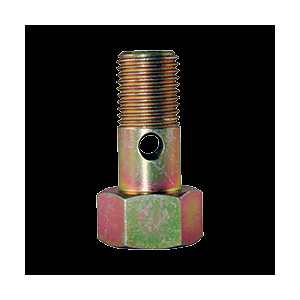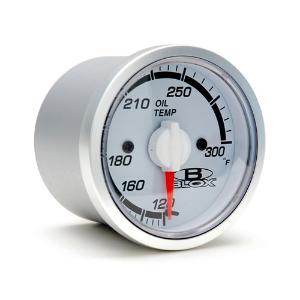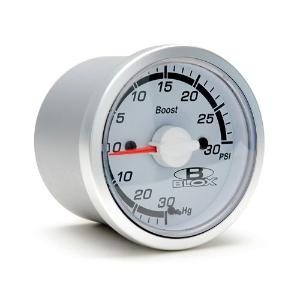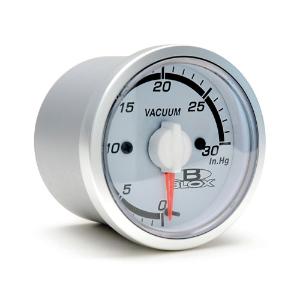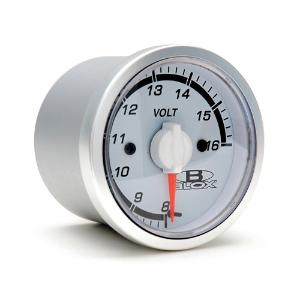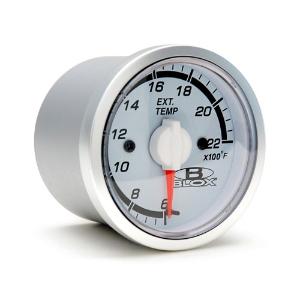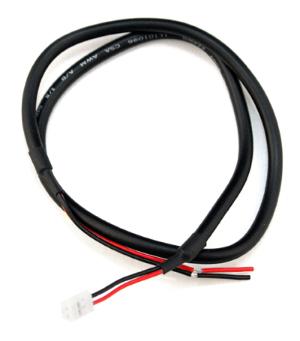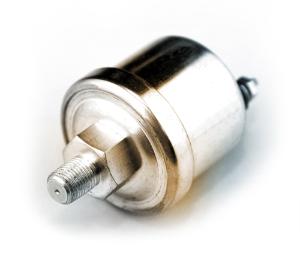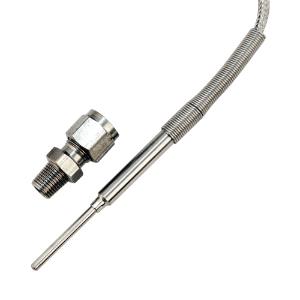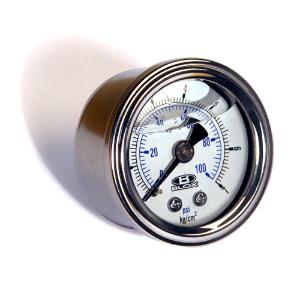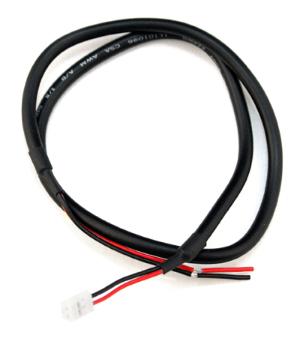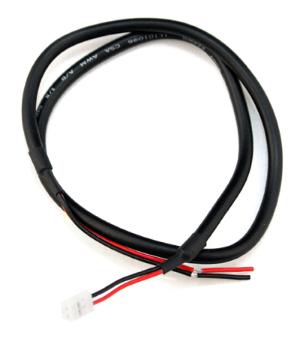Hello, Sign In!
Chevrolet Nova Gauges
At Andy's Auto Sport, we have a huge variety of Chevrolet Nova gauges to ensure that you have every gauge option available to you. We go out of our way to carry every major line of Chevrolet Nova gauges, so that whether you are looking for a Chevrolet Nova gauge cluster or an oil pressure gauge or a vacuum gauge or anything in between, we've got it for you. Andy's Auto Sport is the ultimate shopping destination for your Chevrolet Nova gauge needs!
Select Your Vehicle
Shop Chevrolet Nova Gauges by Year
Shop Chevrolet Nova Gauges by Brand
1 - 12 of 428
Sort by:
Lettering Color: Black
Face Color: White
Gauge Type: Oil Temperature
Lettering Color: Black
Face Color: White
Gauge Type: Boost
Lettering Color: Black
Face Color: White
Gauge Type: Vacuum
Lettering Color: Black
Face Color: White
Gauge Type: Volt
Lettering Color: Black
Face Color: White
Gauge Type: Exhaust Temperature
Lettering Color: Black
Face Color: White
Gauge Type: Fuel
Fits: All Vehicles (Universal)
PART# BXGA-00304
When you click on links to various merchants on this site and make a purchase, this can result in this site earning a commission. Affiliate programs and affiliations include, but are not limited to, the eBay Partner Network.
Not able to find what you are looking for?


OER 6496617 1969-74 Nova Speedometer, 120 MPH, w/Console Gauges

White Face Gauges for 1968-1974 Chevrolet Nova

White Face Gauges for 1962-1965 Chevrolet Nova

White Face Gauges for 1968 Chevrolet Nova

1962-1965 Chevy Nova LED Direct Replacement Gauge Cluster, Blue, LEDs USA Made

OER 6496615 69-74 Nova Speedometer, 120 MPH, w/o Console Gauges
WHY TO BUY?
Without a set of properly functioning Chevrolet Nova gauges, you would be missing out on all of the vital information that is necessary to tell you how your engine is performing under a variety of conditions. If you're like us, you like to keep an eye out for any warning signs, and the only way to properly do that from the cockpit is to have an accurate set of Chevrolet Nova gauges. Factory gauges aren't always the most accurate under extreme conditions, so if your ride is modified beyond the basics, we think you should look into a set of aftermarket Chevrolet Nova gauges.
DID YOU KNOW?
Gauges are available in both mechanical and electronic versions. A mechanical Chevrolet Nova gauge is often easier to install, but gauges for stats such as oil and fuel pressure require that a fluid line be teed into the passenger compartment. Electronic Chevrolet Nova gauges, on the other hand, read signals from sensors installed on your engine. Pricing for Chevrolet Nova gauges can run all across the board, based on quality of construction and included features. Some gauges simply offer a basic readout, while others include audible warnings and multiple function presets.
FAQs
Q: What are the different types of gauges available?
A: There are dozens of gauges available which monitor all types of engine performance. Some common ones are air/fuel ratio, oil pressure, oil temperature, coolant temperature, exhaust temperature, fuel pressure and nitrous pressure gauges. Several more are available, so check our product pages to get more details.
Q: Do gauges work on any vehicle?
A: Gauges are universal and can be mounted virtually anywhere in any vehicle. Gauge pods are usually used to house these aftermarket gauges within your vehicle.
Q: How do you install gauges?
A: Some gauges are electrical while some are mechanical. Electrical gauges use sensors that have to be installed, while mechanical gauges rely on hoses for feedback. All gauges must be wired up for lighting within your vehicle.
Q: How do I install a tach in a car that did not come with one? How difficult is it?
A: A tachometer is a great instrument to have in your car. Monitoring your engines RPM will help you shift at the appropriate time to gain the best performance or even better gas mileage. Most aftermarket tachometers only have 3 or 4 wires that need to be connected for operation. A main power wire that gets connected to a 12 volt ignition source, a ground wire, a tach signal wire that connects to the coil or the designated signal wire in your cars wiring diagram, and sometimes a wire to run the light inside the tach for night time use, which can be connected to the same power source as your other dash lights. If your car did not come with a tach, but it was an option for your specific model then there is a good chance the wiring is already in place to run the tachometer. It is best to purchase a factory service manual and carefully study the wiring schematics to determine if the wiring is there or not. The only tools you will need for this wiring job are a pair of wire cutters, a pair of wire strippers, a good pair of wire crimpers, some crimp-on style electrical connectors and a little electrical tape. While this is a pretty simple job, if you are not comfortable using these tools it is best to seek professional help.
If you are trying to install a late model gauge cluster, including a tach, into an older model car that did not have one the process is a little more complicated. You will need the wiring diagrams for both the donor vehicle and the car you are installing the gauge cluster in. You will then have to carefully trace and mark each wire to determine what it is for. Finally you connect the appropriate wires together (temp gauge to temp sender wire etc.) and carefully tape off any wires that are unused. Because modern cars use have varied computer controlled components it is not always possible or compatible to swap gauge clusters so it is important to research the subject for your specific model before taking the plunge.
Q: Why buy gauges?
A: Gauges can give you the warm feeling of knowing that your engine is healthy and warn you when it isn't. The main gauges that help you monitor the health of any high-performance engine would be the basic gauges, such oil pressure, oil temperature and coolant temperature. Aside from that, they give your car that custom race look.
A: There are dozens of gauges available which monitor all types of engine performance. Some common ones are air/fuel ratio, oil pressure, oil temperature, coolant temperature, exhaust temperature, fuel pressure and nitrous pressure gauges. Several more are available, so check our product pages to get more details.
Q: Do gauges work on any vehicle?
A: Gauges are universal and can be mounted virtually anywhere in any vehicle. Gauge pods are usually used to house these aftermarket gauges within your vehicle.
Q: How do you install gauges?
A: Some gauges are electrical while some are mechanical. Electrical gauges use sensors that have to be installed, while mechanical gauges rely on hoses for feedback. All gauges must be wired up for lighting within your vehicle.
Q: How do I install a tach in a car that did not come with one? How difficult is it?
A: A tachometer is a great instrument to have in your car. Monitoring your engines RPM will help you shift at the appropriate time to gain the best performance or even better gas mileage. Most aftermarket tachometers only have 3 or 4 wires that need to be connected for operation. A main power wire that gets connected to a 12 volt ignition source, a ground wire, a tach signal wire that connects to the coil or the designated signal wire in your cars wiring diagram, and sometimes a wire to run the light inside the tach for night time use, which can be connected to the same power source as your other dash lights. If your car did not come with a tach, but it was an option for your specific model then there is a good chance the wiring is already in place to run the tachometer. It is best to purchase a factory service manual and carefully study the wiring schematics to determine if the wiring is there or not. The only tools you will need for this wiring job are a pair of wire cutters, a pair of wire strippers, a good pair of wire crimpers, some crimp-on style electrical connectors and a little electrical tape. While this is a pretty simple job, if you are not comfortable using these tools it is best to seek professional help.
If you are trying to install a late model gauge cluster, including a tach, into an older model car that did not have one the process is a little more complicated. You will need the wiring diagrams for both the donor vehicle and the car you are installing the gauge cluster in. You will then have to carefully trace and mark each wire to determine what it is for. Finally you connect the appropriate wires together (temp gauge to temp sender wire etc.) and carefully tape off any wires that are unused. Because modern cars use have varied computer controlled components it is not always possible or compatible to swap gauge clusters so it is important to research the subject for your specific model before taking the plunge.
Q: Why buy gauges?
A: Gauges can give you the warm feeling of knowing that your engine is healthy and warn you when it isn't. The main gauges that help you monitor the health of any high-performance engine would be the basic gauges, such oil pressure, oil temperature and coolant temperature. Aside from that, they give your car that custom race look.
Filter Your Results
Category 

-
Gauges(428)
Face Color 

Gauge Type 

Lettering Color 

Chevrolet Nova Gauges
At Andy's Auto Sport, we have a huge variety of Chevrolet Nova gauges to ensure that you have every gauge option available to you. We go out of our way to carry every major line of Chevrolet Nova gauges, so that whether you are looking for a Chevrolet Nova gauge cluster or an oil pressure gauge or a vacuum gauge or anything in between, we've got it for you. Andy's Auto Sport is the ultimate shopping destination for your Chevrolet Nova gauge needs!
Choose Your Vehicle:
Shop Chevrolet Nova Gauges by Year
Shop Chevrolet Nova Gauges by Brand
1 - 12 of 428
Sort by:
Lettering Color: Black
Face Color: White
Gauge Type: Oil Temperature
Lettering Color: Black
Face Color: White
Gauge Type: Boost
Lettering Color: Black
Face Color: White
Gauge Type: Vacuum
Lettering Color: Black
Face Color: White
Gauge Type: Volt
Lettering Color: Black
Face Color: White
Gauge Type: Exhaust Temperature
Lettering Color: Black
Face Color: White
Gauge Type: Fuel
Fits: All Vehicles (Universal)
PART# BXGA-00304
When you click on links to various merchants on this site and make a purchase, this can result in this site earning a commission. Affiliate programs and affiliations include, but are not limited to, the eBay Partner Network.
Not able to find what you are looking for?


OER 6496617 1969-74 Nova Speedometer, 120 MPH, w/Console Gauges

White Face Gauges for 1968-1974 Chevrolet Nova

White Face Gauges for 1962-1965 Chevrolet Nova

White Face Gauges for 1968 Chevrolet Nova

1962-1965 Chevy Nova LED Direct Replacement Gauge Cluster, Blue, LEDs USA Made

OER 6496615 69-74 Nova Speedometer, 120 MPH, w/o Console Gauges
WHY TO BUY?
Without a set of properly functioning Chevrolet Nova gauges, you would be missing out on all of the vital information that is necessary to tell you how your engine is performing under a variety of conditions. If you're like us, you like to keep an eye out for any warning signs, and the only way to properly do that from the cockpit is to have an accurate set of Chevrolet Nova gauges. Factory gauges aren't always the most accurate under extreme conditions, so if your ride is modified beyond the basics, we think you should look into a set of aftermarket Chevrolet Nova gauges.
DID YOU KNOW?
Gauges are available in both mechanical and electronic versions. A mechanical Chevrolet Nova gauge is often easier to install, but gauges for stats such as oil and fuel pressure require that a fluid line be teed into the passenger compartment. Electronic Chevrolet Nova gauges, on the other hand, read signals from sensors installed on your engine. Pricing for Chevrolet Nova gauges can run all across the board, based on quality of construction and included features. Some gauges simply offer a basic readout, while others include audible warnings and multiple function presets.
FAQs
Q: What are the different types of gauges available?
A: There are dozens of gauges available which monitor all types of engine performance. Some common ones are air/fuel ratio, oil pressure, oil temperature, coolant temperature, exhaust temperature, fuel pressure and nitrous pressure gauges. Several more are available, so check our product pages to get more details.
Q: Do gauges work on any vehicle?
A: Gauges are universal and can be mounted virtually anywhere in any vehicle. Gauge pods are usually used to house these aftermarket gauges within your vehicle.
Q: How do you install gauges?
A: Some gauges are electrical while some are mechanical. Electrical gauges use sensors that have to be installed, while mechanical gauges rely on hoses for feedback. All gauges must be wired up for lighting within your vehicle.
Q: How do I install a tach in a car that did not come with one? How difficult is it?
A: A tachometer is a great instrument to have in your car. Monitoring your engines RPM will help you shift at the appropriate time to gain the best performance or even better gas mileage. Most aftermarket tachometers only have 3 or 4 wires that need to be connected for operation. A main power wire that gets connected to a 12 volt ignition source, a ground wire, a tach signal wire that connects to the coil or the designated signal wire in your cars wiring diagram, and sometimes a wire to run the light inside the tach for night time use, which can be connected to the same power source as your other dash lights. If your car did not come with a tach, but it was an option for your specific model then there is a good chance the wiring is already in place to run the tachometer. It is best to purchase a factory service manual and carefully study the wiring schematics to determine if the wiring is there or not. The only tools you will need for this wiring job are a pair of wire cutters, a pair of wire strippers, a good pair of wire crimpers, some crimp-on style electrical connectors and a little electrical tape. While this is a pretty simple job, if you are not comfortable using these tools it is best to seek professional help.
If you are trying to install a late model gauge cluster, including a tach, into an older model car that did not have one the process is a little more complicated. You will need the wiring diagrams for both the donor vehicle and the car you are installing the gauge cluster in. You will then have to carefully trace and mark each wire to determine what it is for. Finally you connect the appropriate wires together (temp gauge to temp sender wire etc.) and carefully tape off any wires that are unused. Because modern cars use have varied computer controlled components it is not always possible or compatible to swap gauge clusters so it is important to research the subject for your specific model before taking the plunge.
Q: Why buy gauges?
A: Gauges can give you the warm feeling of knowing that your engine is healthy and warn you when it isn't. The main gauges that help you monitor the health of any high-performance engine would be the basic gauges, such oil pressure, oil temperature and coolant temperature. Aside from that, they give your car that custom race look.
A: There are dozens of gauges available which monitor all types of engine performance. Some common ones are air/fuel ratio, oil pressure, oil temperature, coolant temperature, exhaust temperature, fuel pressure and nitrous pressure gauges. Several more are available, so check our product pages to get more details.
Q: Do gauges work on any vehicle?
A: Gauges are universal and can be mounted virtually anywhere in any vehicle. Gauge pods are usually used to house these aftermarket gauges within your vehicle.
Q: How do you install gauges?
A: Some gauges are electrical while some are mechanical. Electrical gauges use sensors that have to be installed, while mechanical gauges rely on hoses for feedback. All gauges must be wired up for lighting within your vehicle.
Q: How do I install a tach in a car that did not come with one? How difficult is it?
A: A tachometer is a great instrument to have in your car. Monitoring your engines RPM will help you shift at the appropriate time to gain the best performance or even better gas mileage. Most aftermarket tachometers only have 3 or 4 wires that need to be connected for operation. A main power wire that gets connected to a 12 volt ignition source, a ground wire, a tach signal wire that connects to the coil or the designated signal wire in your cars wiring diagram, and sometimes a wire to run the light inside the tach for night time use, which can be connected to the same power source as your other dash lights. If your car did not come with a tach, but it was an option for your specific model then there is a good chance the wiring is already in place to run the tachometer. It is best to purchase a factory service manual and carefully study the wiring schematics to determine if the wiring is there or not. The only tools you will need for this wiring job are a pair of wire cutters, a pair of wire strippers, a good pair of wire crimpers, some crimp-on style electrical connectors and a little electrical tape. While this is a pretty simple job, if you are not comfortable using these tools it is best to seek professional help.
If you are trying to install a late model gauge cluster, including a tach, into an older model car that did not have one the process is a little more complicated. You will need the wiring diagrams for both the donor vehicle and the car you are installing the gauge cluster in. You will then have to carefully trace and mark each wire to determine what it is for. Finally you connect the appropriate wires together (temp gauge to temp sender wire etc.) and carefully tape off any wires that are unused. Because modern cars use have varied computer controlled components it is not always possible or compatible to swap gauge clusters so it is important to research the subject for your specific model before taking the plunge.
Q: Why buy gauges?
A: Gauges can give you the warm feeling of knowing that your engine is healthy and warn you when it isn't. The main gauges that help you monitor the health of any high-performance engine would be the basic gauges, such oil pressure, oil temperature and coolant temperature. Aside from that, they give your car that custom race look.
VIDEOS RELATED TO CHEVROLET NOVA GAUGES
VIDEOS RELATED TO CHEVROLET NOVA GAUGES
-
Video Description:Gauges Overview - Presented by Andys Auto Sport
In this video, we go over the ins and outs of aftermarket gauges. Highlights include:
*At 0:38, we explain why aftermarket gauges are usually more accurate, and therefore more useful, than factory gauges.
*At 0:48, we talk about air/fuel ratio gauges.
*At 2:14, we talk about boost gauges.
*At 2:30, we tell you about boost vacuum gauges.
*At 2:42, we go over fuel pressure gauges.
*At 2:56, we talk about oil pressure gauges.
*At 3:07, we talk about oil temperature gauges.
*At 3:28, we tell you about water temperature gauges.
*At 3:40, we talk about tachometers.
*At 4:02, we talk about voltmeters and amp gauges.
*At 4:28, we go over exhaust gas temperature gauges.
*At 4:44, we offer our opinion of the most critical gauges to get for your vehicle.
*At 5:08, we tell you about the different types, styles and sizes of gauges available, including mechanical, electric, analog, and digital.' -
Video Description:Gauges Install for Diesel Powered Trucks - Presented by Andys Auto Sport
In this video, we show you a typical installation of aftermarket gauges into a diesel truck. Highlights include:
*At 0:36, we tell you which gauges we chose for our installation, and why.
*At 2:22, we get started with the installation of our gauges, beginning with our exhaust gas temperature gauge sending unit.
*At 3:53, we begin the installation of our transmission temperature gauge sending unit.
*At 4:55, we install our boost gauge sending unit.
*At 6:50, we run our sending unit wires inside the cab of the truck so that we can hook up our gauges.
*At 8:50, we show you how to tie your gauge wiring into your fuse block.
At 12:45, we install our GlowShift gauge pod.
*At 14:00, we finally hook up the gauges themselves.
*At 14:42, we turn on our new gauges for the first time!' -
Video Description:Gauge Install for Sport Compact Cars - Presented by Andys Auto Sport
In this video, we tell you about the gauges that we installed in our project Integra. Highlights include:
*At 0:59, we talk about the specific gauges we chose and why.
*At 1:46, we talk about gauge accessories, such as sandwich adapters for oil lines.
*At 2:36, we begin our gauges installation.
*At 3:25, we install some gauges in our GlowShift gauge bezel.
*At 6:12, we show you how we installed our boost vacuum gauge's sending unit under the hood.
*At 7:12, we install our oil filter sandwich adapter so that we can get an accurate oil pressure and temperature reading.
*At 10:10, we install our water temperature sending unit.
*At 15:20, we show you the results of our efforts - a slew of new performance gauges!' -
Video Description:Transmission Temperature Gauges - Presented by Andys Auto Sport
So why do you need a transmission temperature gauge? Watch this video to find out! Highlights include:
*At 0:15, we explain the different situations in which you may need a trans temp gauge.'








